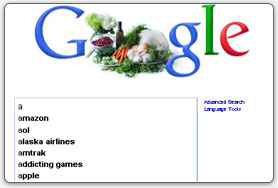PubCon Part 1: Google’s Matt Cutts shares his SEO vision
Part 1 of this 3-part series covers major points made by Google’s SEO “rock star”, Matt Cutts, for his vision of SEO and Social Media’s future. Dozens of renowned thought leaders made compelling presentations at PubCon in Las Vegas this November, covering emerging trends and future technologies for SEO, SEM, Social Media and Affiliate programs. GPI had two conference attendees, and we have combined our notes to share what we felt were some of the more compelling points made at the conference. Since there were over 100 sessions, we cannot summarize the entire conference, but we are sharing the topics and issues we think you will find the most relevant.
After reviewing this blog you may wish to review PubCon Part 2: Social Media & Landing Page Optimization and PubCon Part 3: Google Caffeine, Keywords and Blekko.
Matt Cutts: Super Session: Search Engines & Webmasters – Google, Instant
What has Google accomplished in the last year?
- Mobile: Nexus One and Froyo. Tethering, WiFi Hotspot, voice input everywhere. Flash. Mobile is really growing quickly. Plan carefully to ensure that your site can display properly on mobile devices.
- Chrome browser: This time last year Chrome had only 4.66% of the market; this year Chrome market share has increased to13.04%.
- Trust/Security: Serving search results from Hong Kong, Gmail HTTPS by default, SSL Search, Suspicious Activity in Gmail, Two-factor authentication (something you have and something you know, so if a hacker tries to get in and it’s not an IP address Google is used to, they’ll let you authenticate), Government Request tools. Watch out for black hat hackers.
- Self-Driving Cars: If Instant Previews wasn’t forward-thinking enough for you (Ask.com did it yeeeears ago), Matt says, well, they also launched self-driving cars. Heh.
What has Google done for users?
 Matt Cutts emphasized Speed! We’ve seen Caffeine, Real-Time Search, Google Instant, Instant Previews, Gmail Priority Inbox – they’re all about speed.
Matt Cutts emphasized Speed! We’ve seen Caffeine, Real-Time Search, Google Instant, Instant Previews, Gmail Priority Inbox – they’re all about speed.
Caffeine: Continuous updates of Google’s index. Fifty percent fresher results are achieved. Practically automated document crawling from the cloud or website; Google instantly indexes it, and it can be live and served to users within seconds. This is the essence of what Caffeine is (Real-Time Search).
Google Instant: provides users with results almost instantaneously, by creating suggested links while the user types characters. Matt Cutts revealed that Google metrics indicated people were wasting time searching and looking at the too many results before finding a logical candidate to click on. Now Google offers the most likely answers while you type.
Google Instant for Webmasters. There are three ways to count as impression:
- User hits search/enter or selects query from auto-complete [old way]
- User clicks on a link
- Users stops typing and results displayed for 3+ seconds
What will you see in your logs? — If a user types [pub] meaning [PubCon], you’ll see the full string, [PubCon], in your referrers. You won’t see the fragment. Many people were worried about this issue.
Instant Previews: Lets you see a preview of the page so you can quickly decide which result to click. Ask.com did it years ago, Microsoft did this also. If you click the magnify glass, it will show you a visual snippet and highlight the text that Google pulled with that keyword.
Another improvement: Matt Cutts emphasized that Google search’s change location is the most important when you use this feature for SEO. Now you can do queries as if you were in New York when you’re really in Argentina. This change also affects the ads that will be displayed, as those results are locale based also.
What has Google done for Web developers?
Time response factors – According to Mat Cutts, Google has done a number of things to make sites display faster:
- mod_pagespeed
- open-source Apache module
- can reduce page load times by 50 percent
- Asynchronous Google Analytics
- Improved accuracy -goes in the document head.
- New default tracking code
- SPDY Protocol
- Crawling AJAX
- #! URLs were adopted by Facebook and Twitter. Googlebot now gets an HTML snapshot of a page.
What has Google done for webmasters?
Easier Spam Reporting from Google
- Google Web spam Report Chrome extension
- Automatically populates these fields
Are spam reports read by Google? Matt Cutts said, yes, but Google may not manually review every report. Investigations are prioritized based on user impact. Spam reports gets a 4x priority multiplier as if Google found it themselves. The higher profile a site has, the more seriously Google will take the report.
What else has Google done?
- Cross-domain rel=”canonical”
- rel=”alternate” for multi-lingual templates
- Multiple content types supported in a single sitemap file
- Updated SEO Starter Guide
- Google’s SEO Report Card
- Easy accessibility wins for YouTube; Google has tools that will automatically run auto captions from YouTube content.
- New ways to verify ownership of a site:
- Verified owner grants access to additional users
- Verification takes place via Google Analytics code
Site Performance in labs – only affects less than one percent of queries. That’s less than one in a thousand sites. Don’t panic, but if you CAN speed up your site it can help your ROI and conversions. (Some webmasters were concerned that sites with older, slower loading graphics may be slipping in search results.)
Notifications: Message Center notifications for suspected hacking and increase in crawl errors. You need to enable email forwarding so you can get the messages from Webmaster center!
Rich Snippets Improvements
- goo.gl: Fast URL shortener with excellent up time.
- SSL Search: Your boss or internal corporate IT won’t see your searches.
- Big Trend: Hacked Sites. They’re ready for spam again, especially link spam.
- Birthday Doodle: Remember to set your birthday in your Google Profile
More help for webmasters
Google engineers are also working to help webmasters affected by spam. Google is providing more and better penalty notifications. Some new messages are being sent today. Matt Cutts indicated that Google also has an improved reconsideration process in development.
Big Trends that are important to Google
- Mobile
- Local
- Social
- Variety: Real-time, Video, News
- HTML5
Matt Cutt’s list of the 9 tips you must know
- SEO: Chase users, not algorithms.
- Keywords: Ask 10 taxi drivers rule [by “taxi drivers”, he means people NOT in the industry] – ask “normal people” what they use for key word search strings.
- Blog: Pay attention to your first link [Don’t waste your first link].
- Content: Read it out loud. If the content is peppered with keywords and sounds awkward, rewrite it to make it more user friendly.
- Twitter: Leave room for “RT @you” – make Tweets 120 characters.
- Video: Make one. Video is one of the most popular properties for search after images.
- Achieving Conversion: Test. Repeat. Guide the user.
- Anyone: Own your own domain. If you don’t own your own domain, (e.g. a WordPress blog), it may be taken away from you.
- Webmaster Tools: Turn on Email (ability to forward via email) on your site.
